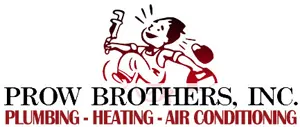Don’t Heat Your Home Using These Dangerous Methods

During sub-zero weather, many households use supplemental heat sources to make their living quarters more comfortable. These heating alternatives can create problems that are much worse than being cold. According to the Electrical Safety Foundation International, heating related fires are the second most common cause of death for older people. Additionally, the Consumer Product Safety Commission states that deaths from carbon monoxide poisoning have been on the rise since 1999 as people use heating methods like kerosene heaters to save on energy costs.
There are some supplemental heating methods that should never be used. Each of these methods pose fire, burn or carbon monoxide hazards. Further, they rarely are effective in generating the heat needed to make a room comfortable. They are not worth the risks they pose.
Space Heaters
While It’s true that today’s space heaters are equipped with many safety devices, from automatically shutting down if the heater is tipped over to surfaces that stay cool to the touch. However, according to the National Fire Protection Association, space heater related fires represented 33 percent of all home heating fires and were the cause of 80 percent of fire-related deaths. Due to the electrical usage of these heaters, when plugged into an extension cord, power strip or into a plug that also powers another device, it’s easy to overload the circuit. Space heaters located close to furnishings can ignite fabric, and a space heater can set fire to carpeting.
Kitchen Stoves
Another very dangerous practice is to use the kitchen stove as a heat source. The homeowner will either fire up all of the burners or they will set the oven at the highest temperature possible and then crack the oven door open. Both gas and electric ovens used in this way present serious burn and fire hazards. Additionally, a gas oven left on continually can produce a buildup of carbon monoxide gas.
Camp Stoves & Kerosene Heaters
Carbon monoxide poisoning is the greatest hazard presented by using camp stoves, propane or kerosene heaters or other portable flameless chemical heaters indoors. These devices were designed to be used in a well-ventilated area, either outdoors or in a large, airy space such as a warehouse. Operating them in a tightly sealed home guarantees the buildup of carbon monoxide. This gas is colorless, odorless and the symptoms of monoxide poisoning often resemble those of the initial stages of the flu. People who are asleep or intoxicated may be asymptomatic. News reports of entire families succumbing to carbon monoxide poisoning during the night are unfortunately quite common.
When it comes to home comfort, an ounce of prevention is worth a pound of cure. Regular routine maintenance of the furnace or heat pump keeps it in prime condition for the heating season. Clean furnace filters, a clog-free air intake, a heat exchanger that is in good condition and ductwork that is crack-free and well insulated provide a homeowner with more bang for his or her energy buck. R&D Indoor Comfort offers a service plan that includes twice-yearly inspection of the furnace or heat pump, thermostat and other heating components and includes same-day emergency service in the event of system failure. If your home is too cool for comfort, play it safe. Call R&D Indoor Comfort today
